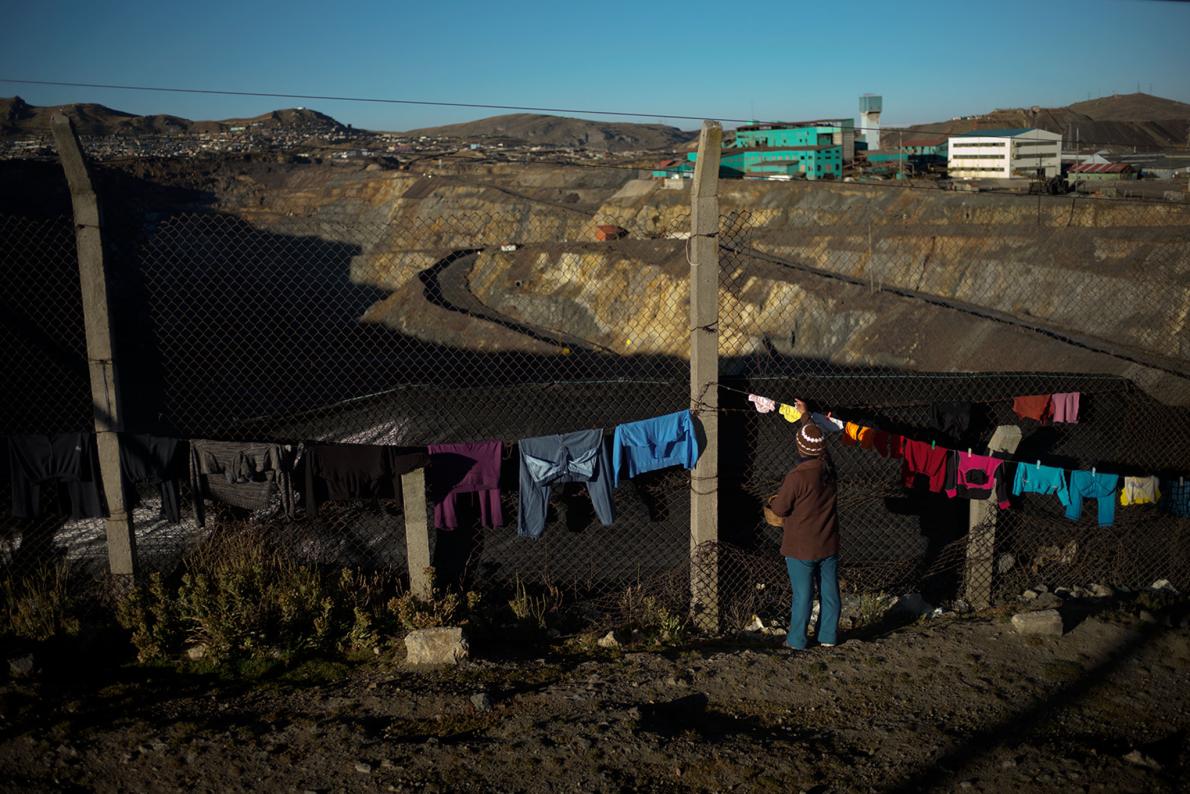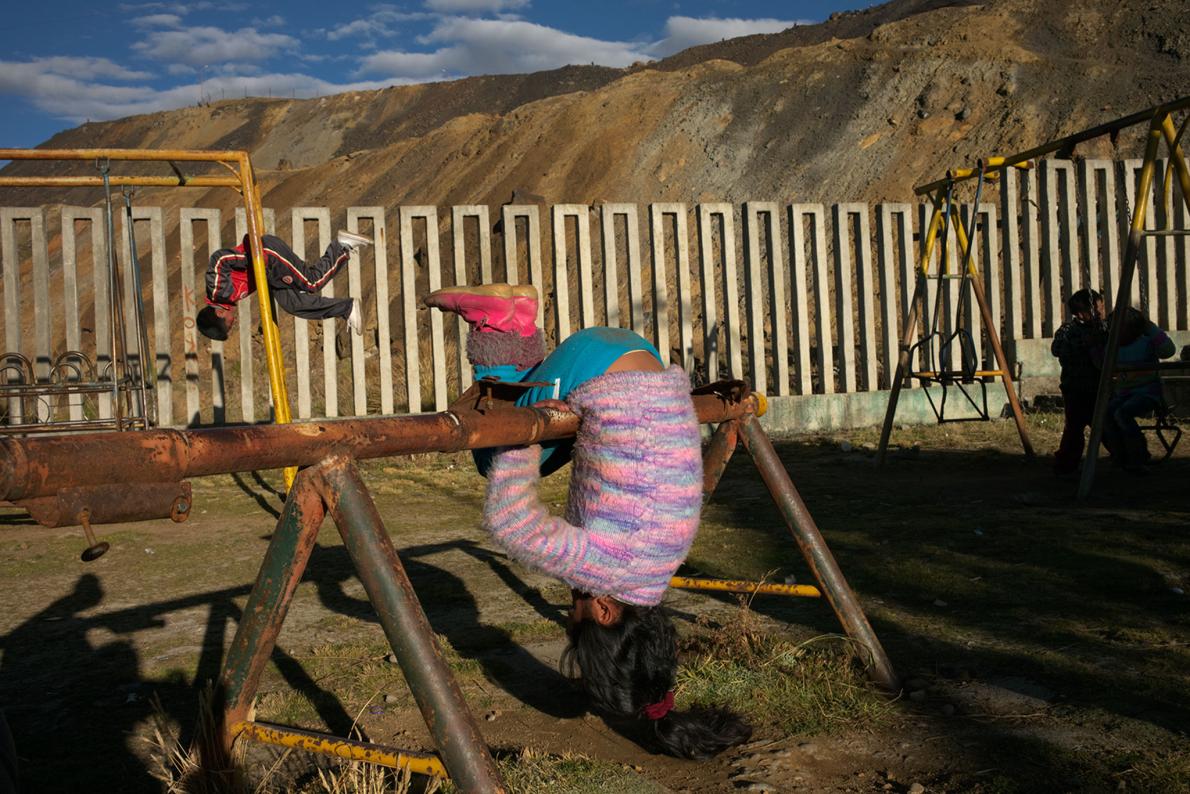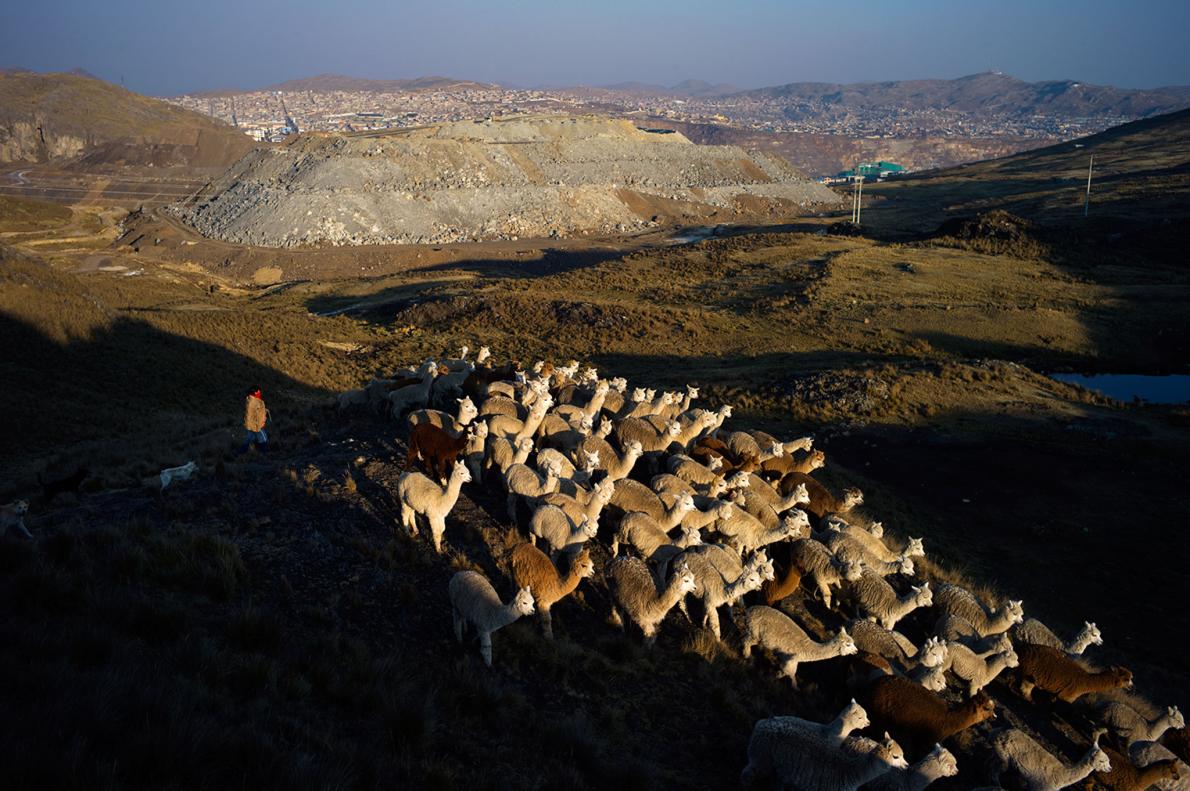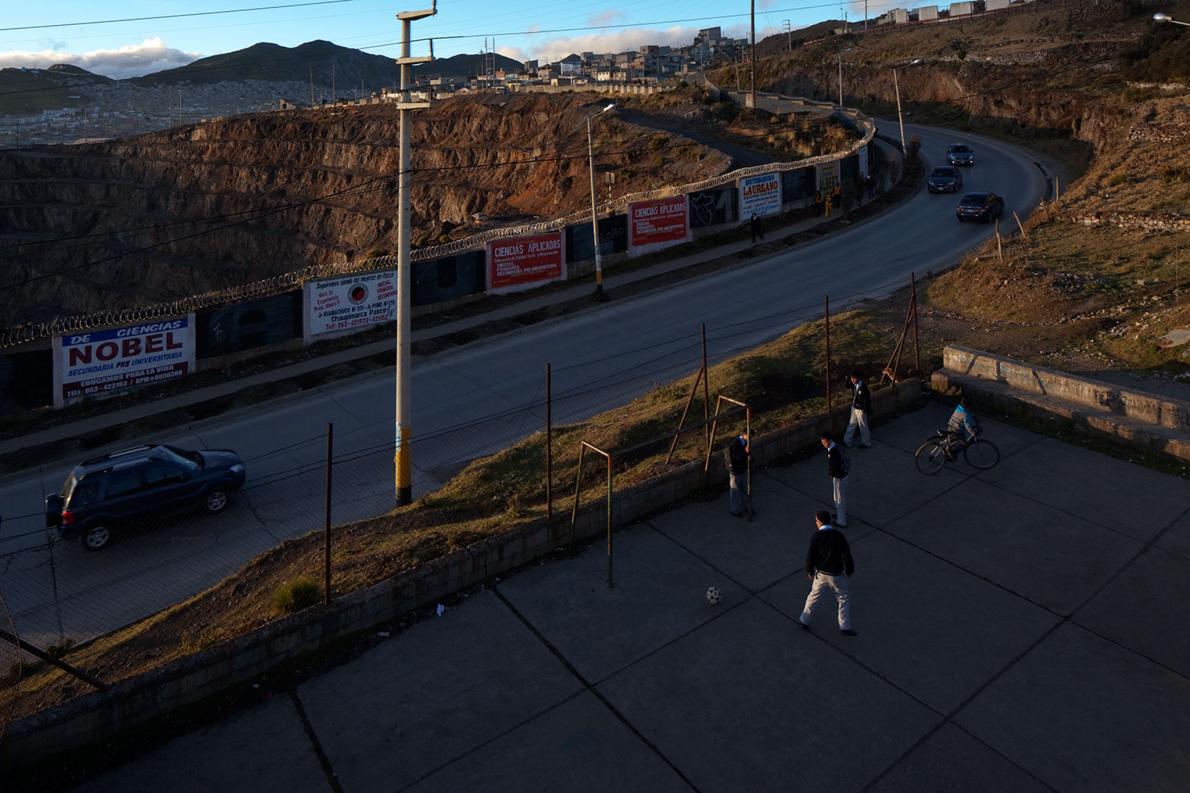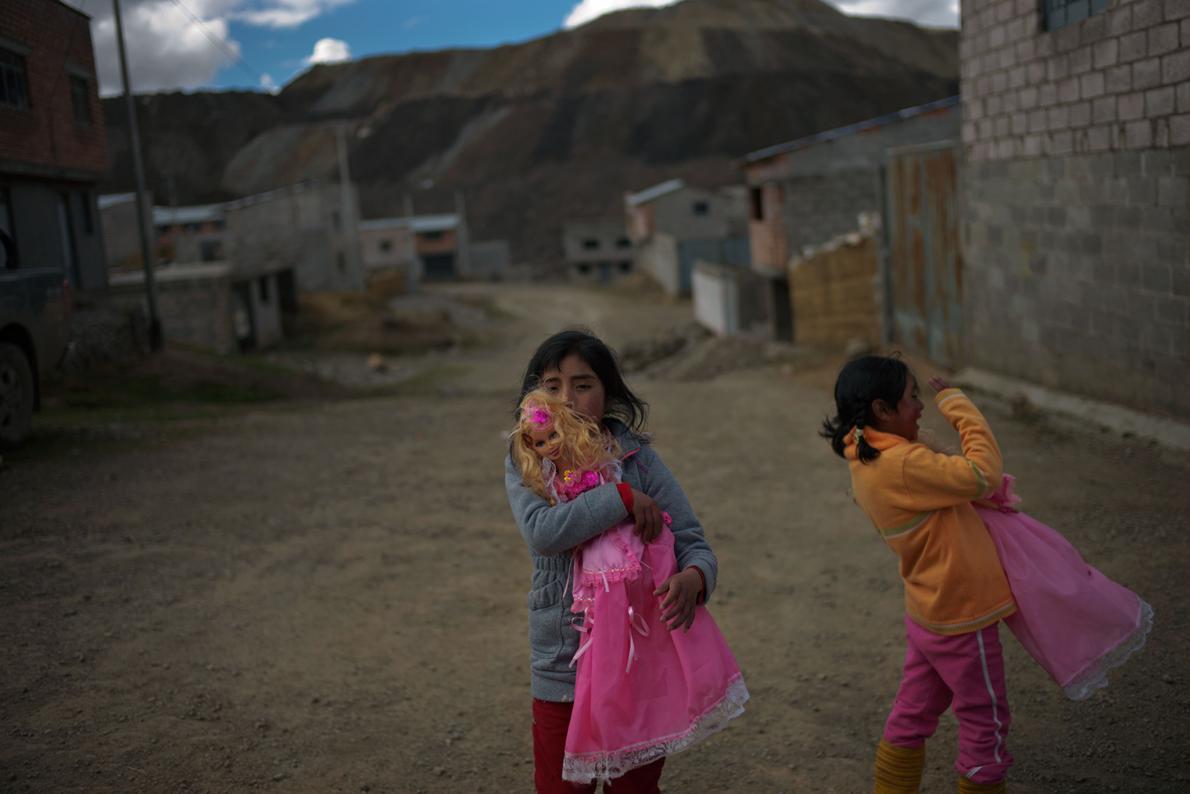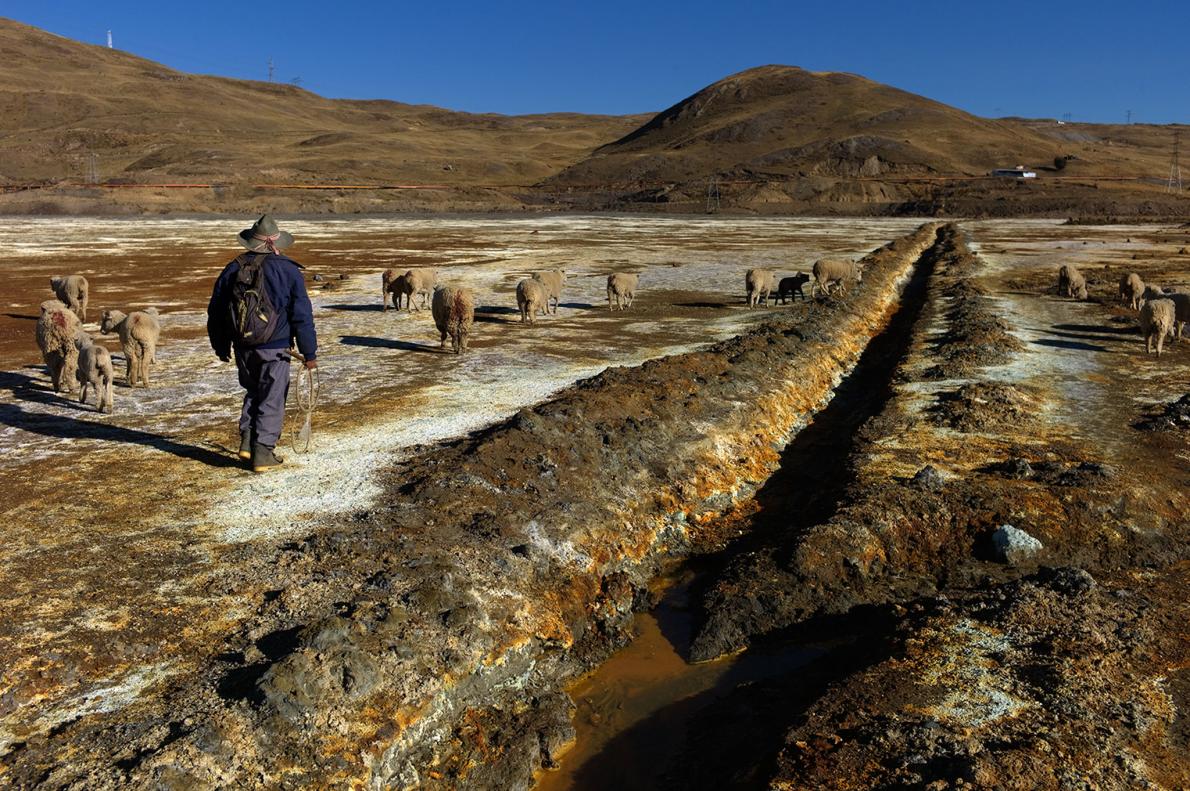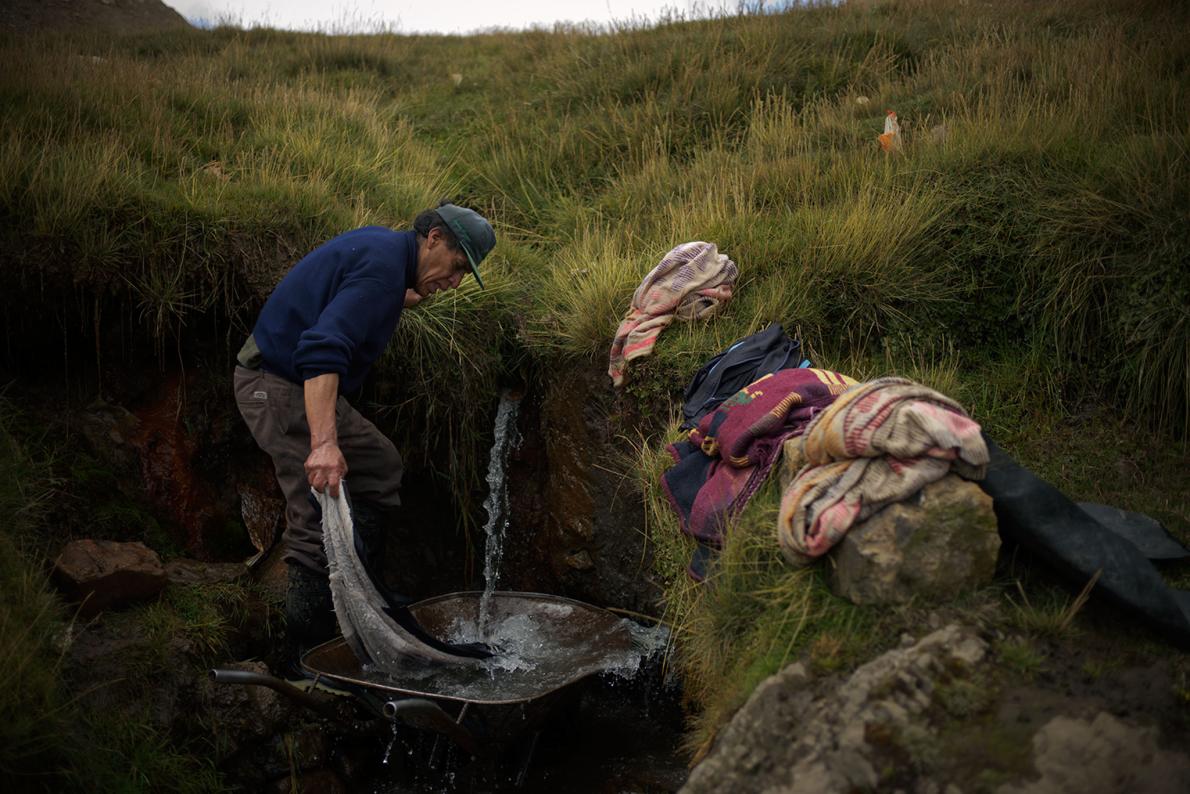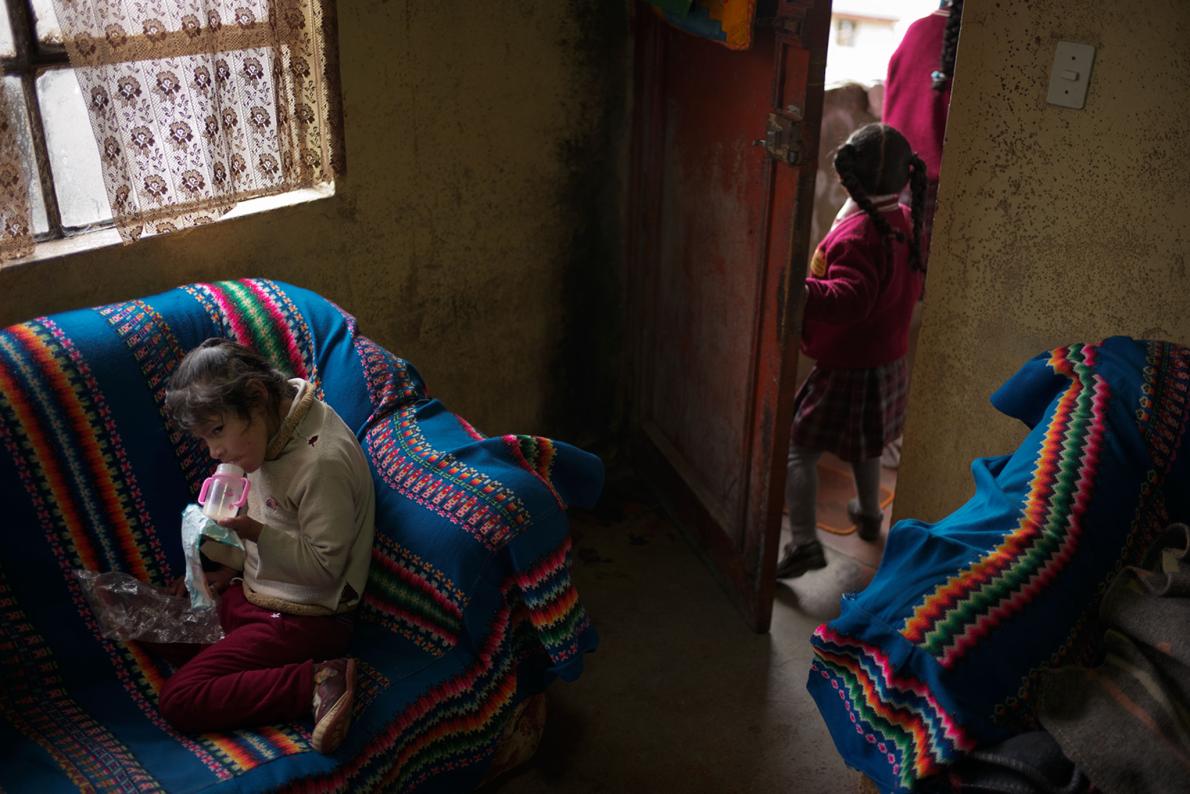High in the Andes, A Mine Eats a 400-Year-Old City
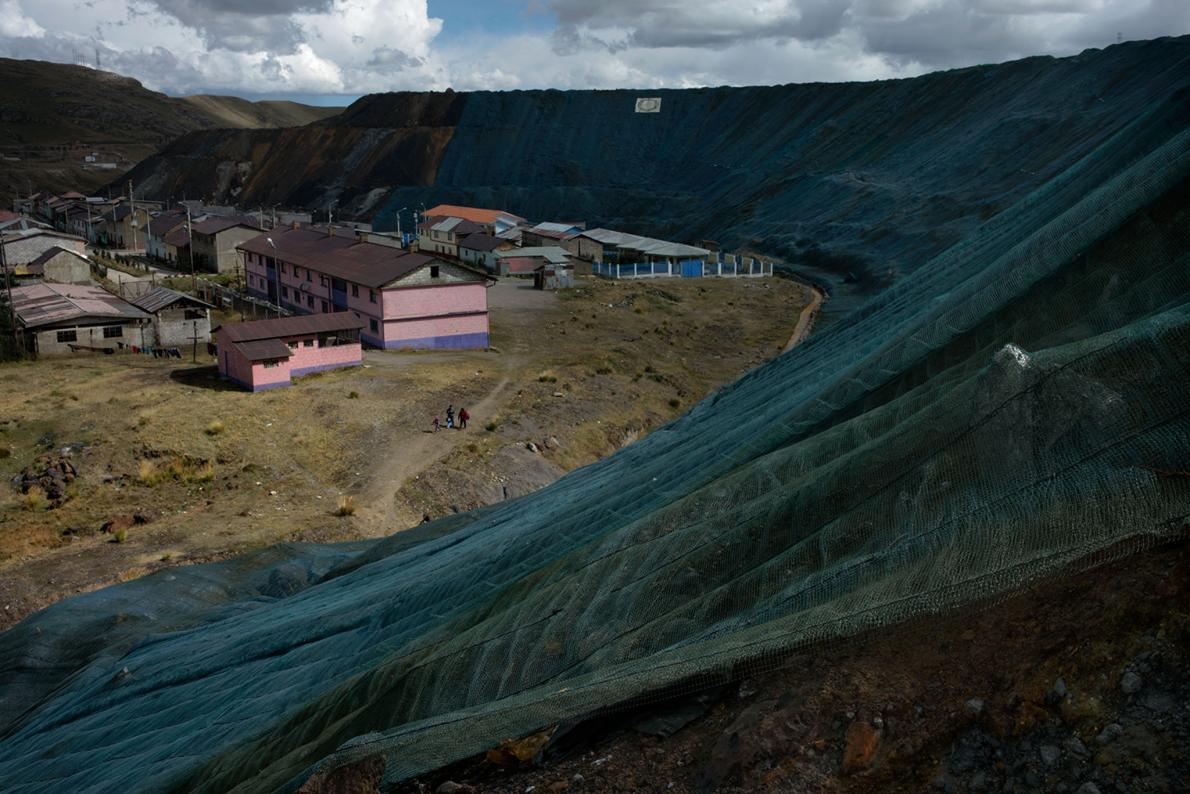
The mine at Cerro de Pasco, Peru, once funneled silver to the Spanish crown. Today, it’s consuming the town—and poisoning children with lead.
CERRO DE PASCO, Peru—For a woman intent on moving an entire city, fifty-six-year old Congresswoman Gloria Ramos Prudencio, barely five feet tall, looks unassuming. Her city is Cerro de Pasco, population 70,000. Perched on the treeless Peruvian altiplano at 14,200 feet, it’s one of the highest cities on the planet.
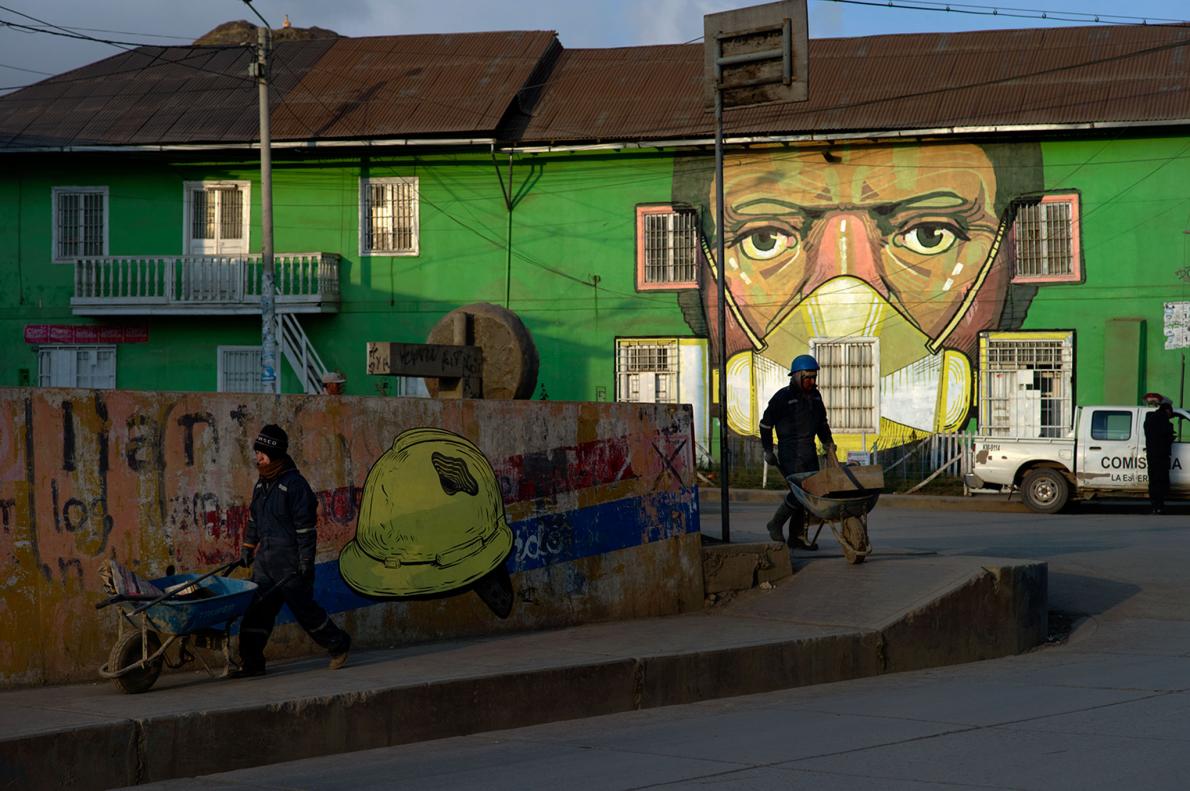
“As a girl, walking past Bellavista, where the Americans lived, I would pester my mother, ‘Why do the gringos get the nice houses?’ ” the soft-spoken Ramos recalls. “In school my teachers called me preguntona”— she of too many questions.
These days, her main question is how to save her hometown from a very big hole.
Latin America over the past decade has seen its mining sector triple in value to $300 billion. Peru’s economy, among the fastest growing, derives one-sixth of its gross domestic product from minerals. At Cerro de Pasco, you can see the entire history of Peruvian mining —and the costs it sometimes imposes: The mine here is literally consuming the 400-year-old town that supports it.
The open-pit mine operated by a subsidiary of Volcan Compañía Minera, a Peruvian company, is a crater terraced like an inverted ziggurat. Over a mile long by a half-mile wide by a quarter-mile deep, it laps at the retreating town like a hungry sea. A line of abandoned houses, their steel roof tiles rusting and pockmarked, serves as a no-man’s-land between the chasm and the living city.
That barrier is not enough to protect the inhabitants, especially the children, from the mine’s toxins. Cerro de Pasco is one of the worst lead-poisoning clusters in the world.
Two hundred yards from the lip of the mine, the town’s main plaza is dominated by an oversized statue of a young man, a local boy turned Peruvian national hero. He’s about to drive a hypodermic syringe into his own arm.
Daniel Alcides Carrión was a medical student in 1885, when workers building the railroad into town were being decimated by a disease called Oroya fever. By injecting himself with tissue from a survivor’s skin lesion, Carrión proved that the fulminant fever and a chronic condition known as Peruvian wart had the same cause—a microbe that, decades after Carrión injected himself, would become treatable with antibiotics. Side panels along the statue’s base depict how he died, delirious with fever.
A shop in the base sells commemorative plastic syringes. They make strange souvenirs of a star-crossed town—but once you’ve been there, and seen what its inhabitants are up against, they seem apt.
Glory Days
Four hundred years ago, legend has it, the rocks around campfires in Cerro de Pasco “wept silver.” For centuries, the mine here ranked among the Spanish Crown’s richest, filling galleons with silver. In 1820, the town was the first in Peru to be liberated from the Spanish. By the early 1900s it was Peru’s second-largest city; fancy carriages and European consuls graced its streets.
In 1903, the world’s highest railroad completed its 200-mile cut into the Andes. It brought in Americans of the Cerro de Pasco Corporation, which bought the mine. Copper ruled, but silver could still be found. J.P. Morgan, Henry Clay Frick, and the Vanderbilt family, among other gringo investors, made bundles. In the 1950s, copper gave way to zinc and lead, a lot of it now destined for China.
'The center of the city once had foreign consulates and historic homes. We were Peru’s second city. The pit took all that' — Gloria Ramos.
Until the mid-1950’s, miners dug out ore the old-fashioned way, through tunnels. A year after Gloria Ramos was born, the mining company switched from tunnels to more efficient open-pit mining—within the city limits. In one of history’s unluckier wish-we’d-known-thens, it turned out the richest veins of lead and zinc were under the town.
“The center of the city once had foreign consulates and historic homes,” Ramos says. “For many years, we were Peru’s second city. The tajo (pit) took all that. These days, even the neighborhoods built in the 1960s to get away from the pit are falling into it.”
For the locals, avoiding a slide into the tajo is just the half of it.
All raw cinderblock and rough-hewn sidewalks, the rump of today’s Cerro de Pasco lacks potable water, because its lakes and rivers glow orange with mining runoff. Trucks supply drinking water at 25 times the cost in Lima. “My neighborhood gets water six hours a week,” Ramos says. This year, a judge allowed Volcan to continue dumping mining waste into a pond just south of town.
There is also almost no indoor heating in Cerro de Pasco. The Andean cold drives shopgirls into parkas and fingerless gloves; you see your breath over dinner in restaurants. Kids scampering down sidewalks have scarlet cheeks, as if they’ve been slapped.
An Epidemic of Lead
Along the western rim of the mine, massive mounds of lead-laced tailings brood over neighborhoods such as Paragsha and Champamarca. Dust from the mounds blows everywhere.
Since 1996, Peru’s health ministry has sampled blood-lead levels in children here twice a year. In 2007, even the U.S. Centers for Disease Control and Prevention (CDC) took part. The results are always the same: More than half the children tested have high lead levels, most likely from ingesting the tailings dust.
“This place is Chernobyl,” says Paul Rodríguez, a doctor in Paragsha’s community clinic. A beefy guy with a quick, ironic smile, Rodríguez is frustrated. He knows from the surveys that the kids coming into his clinic are at risk—in four cases he’s even seen the blue line across the gums that heralds severe lead poisoning. But he can’t order up a diagnostic blood test when a child needs one.
“They give us this,” he says, holding up a government-issued form crammed with check-off boxes. “All the symptoms of lead poisoning. That’s great, except many, like headache, nausea, and vomiting, are nonspecific. You need a lead level. But no lab here can run one. The surveys don’t test everyone, so you have to send your kid to Lima. No one goes. We practice medicine here like blind-man’s bluff.”
'No one wants the mine to go away. We just want it to be responsible' — Celso Santiago.
Volcan spokesman Jorge Leoncio Murillo Nuñez says the company complies with all Peruvian environmental laws and has “carried out campaigns to inform the population about hygiene and cleaning procedures to mitigate the effects of pollution.”

Cecilia Beraún was born in Champamarca, a half-mile south of Rodríguez’s clinic. When I met her, she was living with her two boys in a school storeroom. Thin and worn, she earned her keep by cleaning the school at 4:30 a.m. before trekking an hour down to the base of the mine to work as a shoveler. Pay there was about $1.40 U.S. an hour.
Wedged between the pit and the tailings mounds, Champamarca is lead city. Cecilia’s boys, ages 10 and 7, had lead levels in their blood of 14.5 and 13.7 micrograms per deciliter. The U.S. CDC considers anything over 5 dangerous.
Alex, Cecilia’s neighbor, a father of three, pointed to his 3 year-old son, Yober.
“In March his level was 18.9. He’s had three seizures, we spent last New Year’s in the hospital. They sent him home with no medicines. My older sons weren’t born here and they are OK. I came for the work. For my son’s sake I would sell my house and leave, but no one is buying.”
Lead poisoning is a sneaky beast. Even low levels sap energy, make joints ache, and impair learning; moderate levels, especially in children, permanently lower IQs. Go higher and you get convulsions, organ dysfunction, and death.
“They don’t learn well,” Cecilia said of her boys. “The Ministry of Health sent doctors for one day to examine them. All they prescribed was some vitamins—‘to make them sharper,’ they said.”
Any other advice?
“That we should move away.”
Location, Location
Fix or flee? That is Cerro de Pasco’s daily debate. Each new lead survey prompts hand wringing and a call to action.
Across Peru studies show, not surprisingly, that the farther away people are from lead-contaminated soil, the better. In May 2012 the Peruvian Ministry of Health declared a “state of environmental emergency” in Cerro de Pasco. It pushed for more dust suppression through road paving, covering of tailings piles, and tree planting. A few scrawny saplings got planted.
“No funds for more,” explains a local health official.
Политика конфиденциальности | Правила пользования сайтом
